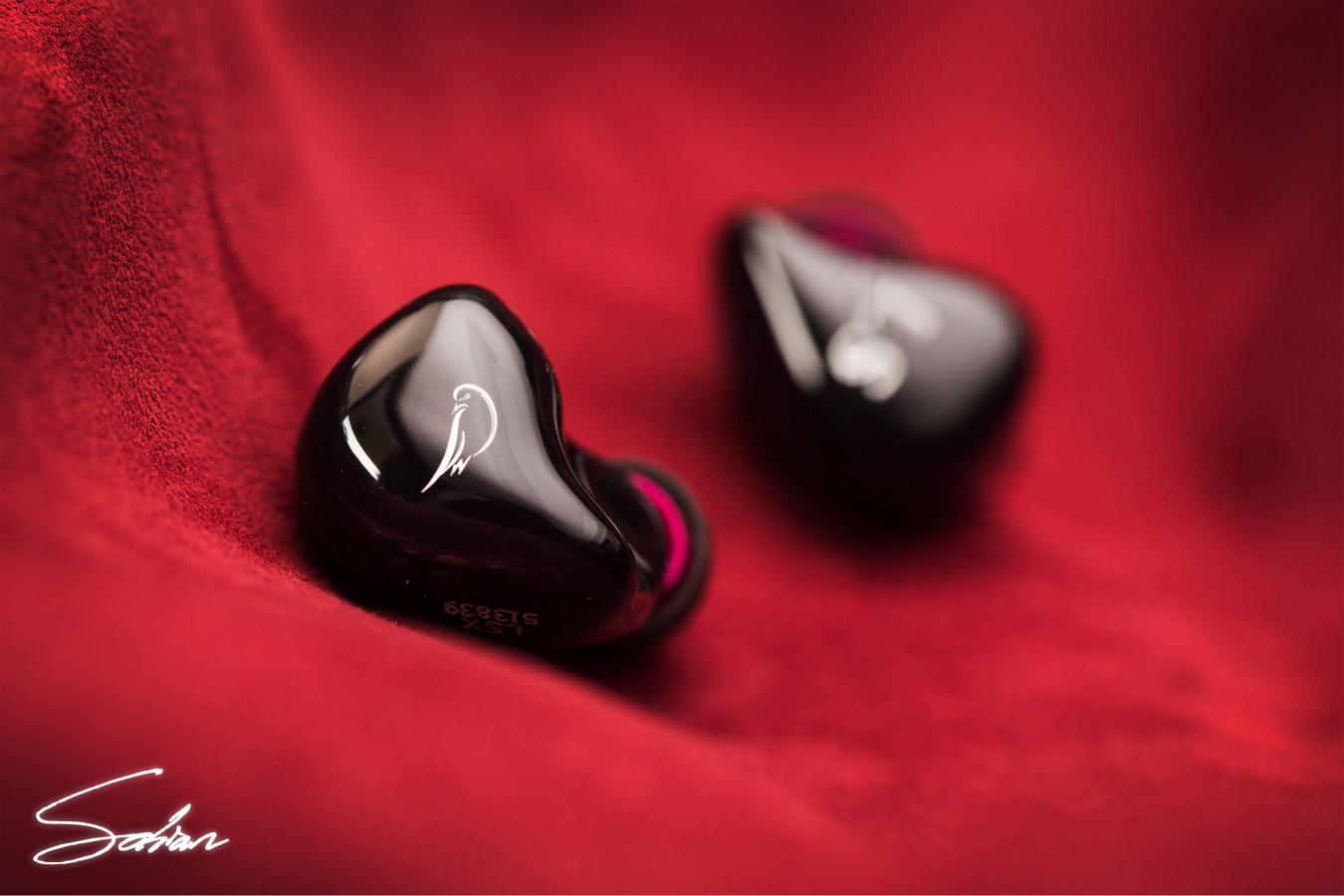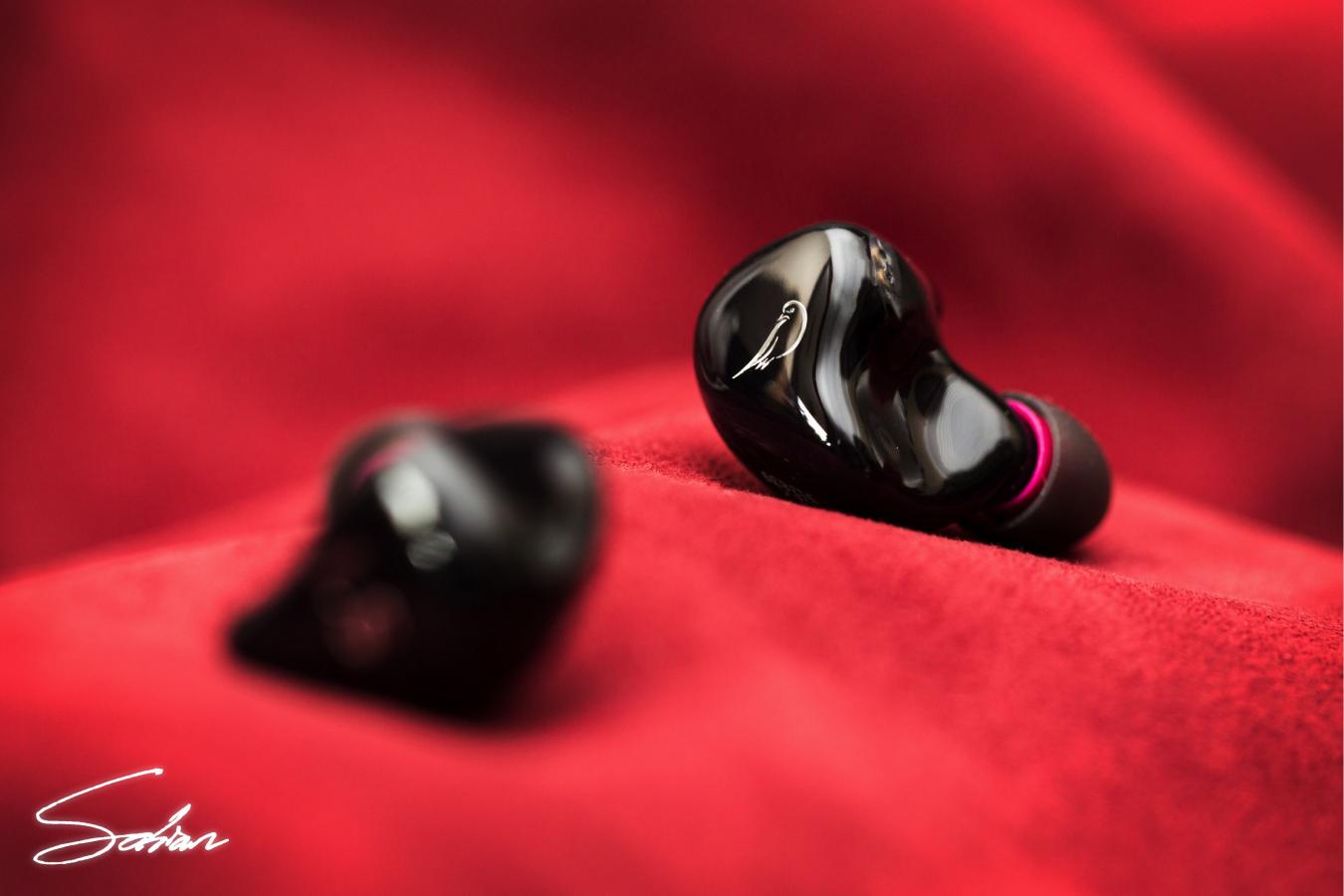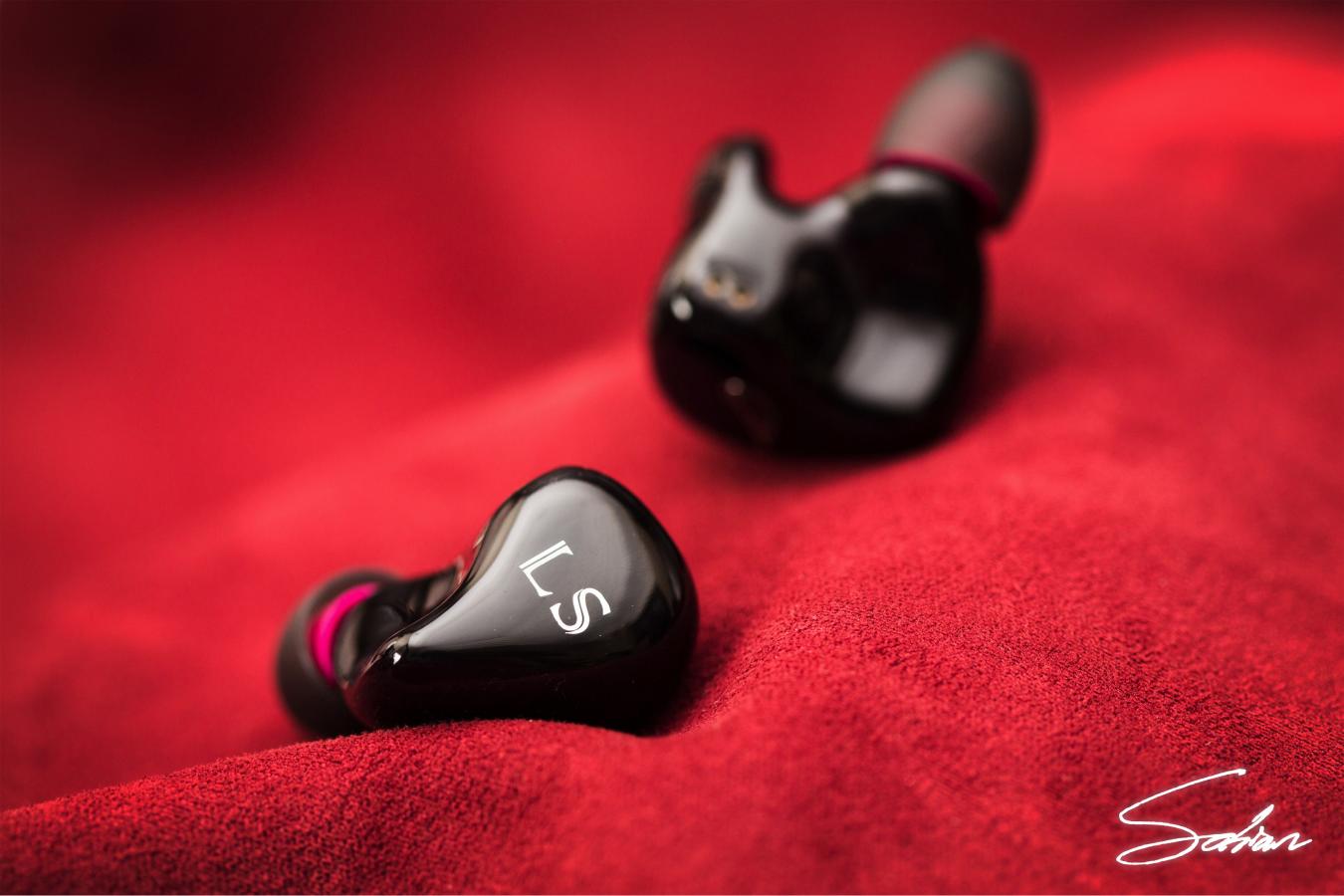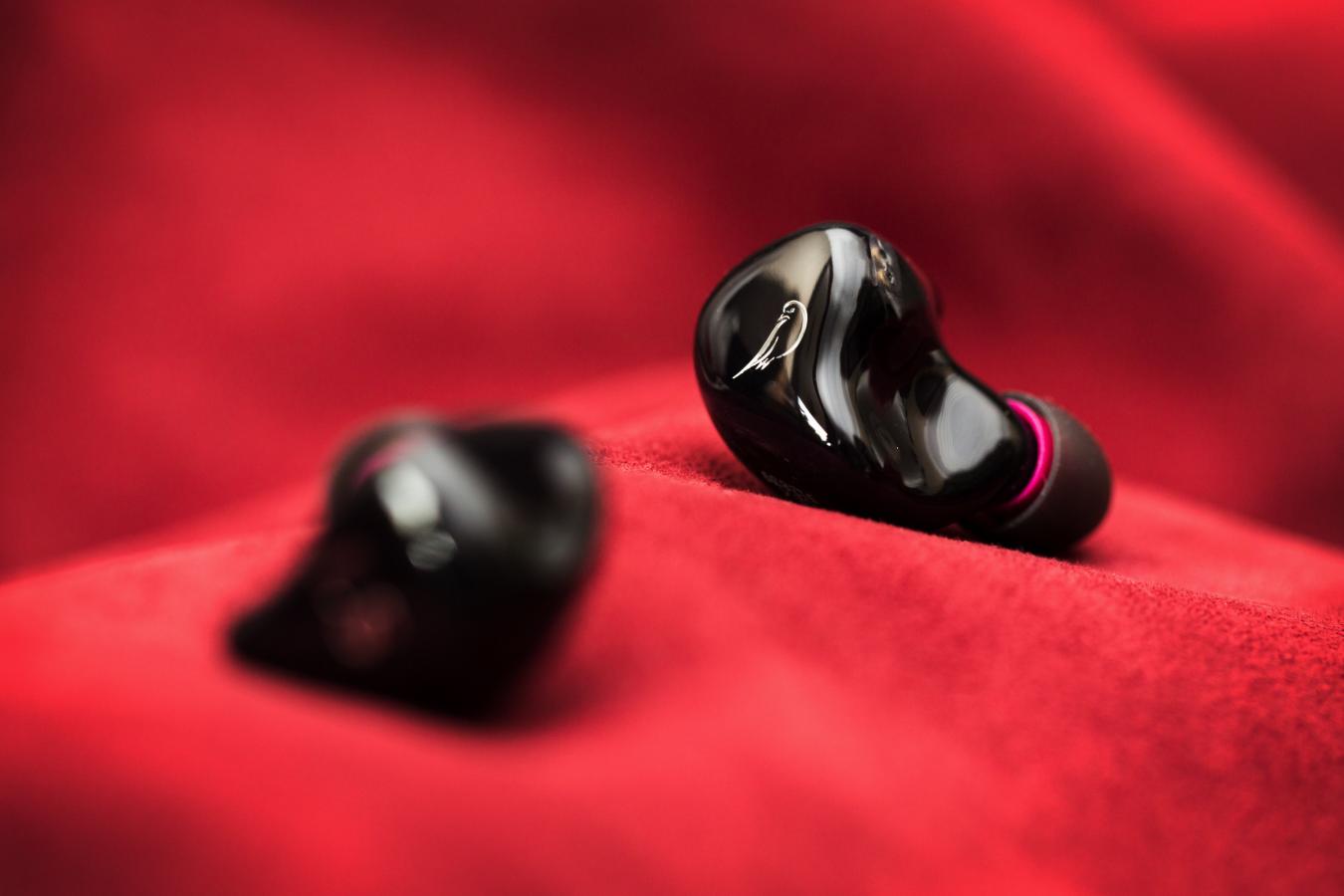Presentation
The Lark Studio LSX straddles between rich, organic warmth and clean, open clarity. Although there’s a distinct, weighty butteriness to its images courtesy of the bass and low-mids, ample upper-treble presence undercuts that fat with plenty of crisp transient attack. Instruments loom large with great fullness. Yet, the LSX stands strong with simple and complex arrangements alike, because of its stability. Instruments sound bold, chesty and tube-esque, but without the congestion one would expect with these sorts of signatures. Despite its facade as a breezy, warm, go-with-the-flow songstress with a penchant for thump if called for, the LSX subtly possesses a marvellous sense of control that elevates it above the rest.

Now, because of the LSX’s larger, bolder images, stage expansion isn’t something you notice right off the bat. It’s really those weighty, energetic instruments that pull you in first, rather than the spaces around them. But, once you adjust, you will begin to notice the pockets of air the LSX sprinkles throughout. Again, it isn’t the most spacey, atmospheric presentation in the world, but it does provide ample headroom for notes to ring and resonate. Despite the LSX’s fuller signature, it’s not an IEM that’s ever stuffy or saturated. This is further proven in imaging and dynamics. As a track builds with more and more elements thrown in, the LSX constantly maintains composure. You have a clear idea of what’s been added and where everything is in relation to each other. And, above all, it’s delivered with the LSX’s warm, clean touch.
Bass
The LSX’s low-end is a wonderful achievement. Tonally, it may lean closer towards neutral because of that upper-treble lift. But, what truly defines that response is its addictively analog spirit. Its attractive blend of body, wetness and thump injects a subtle, vintage playfulness to any piece of music. At the same time, it’s subtle enough to never distract either. This quality is further emphasised with similarly retro-inspired tracks like Justin Stanton’s Automatic Attraction. The kick drums, bass line and toms that kick the track off are reproduced with richness, wetness and warmth. Thumps come and go with excellent timing, tightness and resolve, so both its musical and technical quotas are checked at the same time.
The LSX’s low-end is distinctly mid-bass-tilted. The sub-bass is definitely more reserved in favour of meatier, rounder hits. This technically benefits the LSX, as it provides more headroom for the mid-bass to play around. But at the same time, it should be something to keep in mind if a strong fundamental rumble is something you heavily prioritise when shopping for in-ear monitors. Nevertheless, the bass extends admirably, resolving the most subterranean waves even though they’ll have to sit tight in the very back of the mix. And, bass clarity is excellent because of the LSX’s proficient top-end. Once again, bass response is the LSX’s ace-in-the-hole. It’s a nostalgic blend that appeals to retro sensibilities, but rendered with modern technique. As long as you’re not one to favour loads of sub-bass, I can hardly really fault it.
Midrange
The LSX cuts a bit of that presence moving towards the lower-midrange. This light dip allows transients to cut through without cloy-ness or mud. Nevertheless, the LSX’s warm profile continues to come through, and the region serves as a smooth, seamless bridge between the low-end and the vocal range. Texturally, notes here lie on the smoother, wetter side of the spectrum. There’s a resonant quality to them that musically blends elements together. So, to my ears, the LSX’s low-mids aren’t the most nuanced or analytical in the world. Tom toms and lower-pitched synthesisers are more harmonic and bloom-y than they are contoured and tight. However, this also gives instruments like pianos and horns a musical, full-bodied, reverb-y quality. And, the in-ear’s stable background continues to preserve resolution regardless.

The centre-mids are where much of the LSX’s muscle come into play. A healthy rise through 1-2kHz gives instruments density and solidity. Male vocals in particular are gifted a deep, chesty foundation, so they’re never lost in the low-end. Comparatively, the upper-mids across 3-4kHz are far more laid-back. This means higher-pitched instruments sit further back in the mix. It also means female vocalists have a deeper, chestier note, as their higher overtones are less prevalent. But, the dip also provides space for vocals to breathe. Because those high-pitched notes are less upfront, they have tons of space to reverberate, resulting in an airy, wispy and effortless quality. This may not be preferred by those who enjoy shouty-er or more in-your-face presentations, but it brings a lot of balance to the LSX crucial for its overall performance.
Treble
The LSX’s top-end is coloured towards achieving sharpness and clarity without introducing too much brightness. This is achieved through a peak around 6-7kHz to add tizz, as well as a peak around 12kHz to add definition, bite and contrast against the black background. This means instruments like cymbals and hi-hats cut through the mix really well; punchy and sparkly. Snare drums, electric guitars and horns also come through with immediacy and snap. But, at the same time, appropriate dips around 10kHz have been applied to remove as much sibilance and glare as possible. So, the resulting presentation is crisp without that metallic sheen, which adds a welcome dose of clarity to all genres of music.
However, with all these dips and peaks comes a touch of incoherence. I believe the gulf between the upper-midrange and the low-treble can be problematic at times. Ariana Grande’s voice on Imagine comes across too tizzy, for example. There’s too much of the transient relative to the body – the meat – of the instrument. But, this is less of a problem on well-recorded material, like Dimas Pradipta’s 9 Range Road single or Snarky Puppy’s Family Dinners Vol. 2 album. On the latter, the peaks effectively increase detail retrieval and separation. And, the top-end’s excellent extension also allows for wonderful stereo imaging. The left, right and centre sections remain well-segregated for a convincing around-the-head experience. So, as long as your library isn’t too hotly-mastered, the LSX’s tonal and technical efforts will shine.
General Recommendations
The LSX’s musical, coloured sound makes it ideal for a wide variety of genres, so long as you subscribe to its penchant for body, warmth and clarity. So, if those are qualities that appeal to you, here are three of the LSX’s greatest strengths:

Engaging, analog musicality: The LSX’s mix of body and clarity gives it a vintage vibe without coming across veiled, muddy or congested. It has all the wetness any retro-head would desire, paired with sparkle any all-rounder would be proud to have. So, if you desire an analog sound without compromising cleanliness, cut and clarity, the LSX is a wonderful pick.
Meaty, wet, vintage lows: Mid-bass is the LSX’s forte. There’s a liquid, organic tone to it without becoming overtly bloomy or mushy. It possesses texture as well, and the combination works especially well with recordings old and new. As long as skull-rattling sub-bass isn’t on your wish list, the LSX is a treat if wet, reverb-y and meaty lows are what you’re after.
A technical, coloured sound: The LSX’s musical, engaging signature comes with no cost to technical performance. Stage expansion, resolution, extension and stereo separation are all impressive despite the LSX’s penchant for energy and body. So, if you want to have that analog musicality with apparent refinement and finesse, the LSX is a strong way to go.

But, at the same time, the LSX’s specific colour may be a hindrance to its appeal. If the three following qualities are what you’re searching for in your next in-ear monitor purchase, the Lark Studio LSX may not be the one you’re looking for:
An intimate midrange: Although the LSX is never short on energy, its upper-mids are a tad recessed for a lighter, airier delivery. They’re not particularly saturated or in-your-face. They take a step back to create space instead. So, if intimacy – especially for genres like jazz or R&B – are what you desire from your vocals, the LSX is not the most ideal in-ear for you.
Elevated sub-bass content: Again, the LSX has a clear mid-bass tilt with a more reserved sub-bass region. This means you’ll get a lot more thickness and thump than rumble or verve. So, the LSX isn’t an ideal option for woofer-loving bassheads.
A smooth, reserved low-treble: The LSX’s 6-7kHz peak provides livelier transients and sparkle. Energy and clarity benefit, but it may contribute to slight incoherence. Transients tend to sound thinner than the body, and may sometimes encroach metallicity too. So, if perfect smoothness and linearity are qualities you’re after, the LSX may just fall short.



